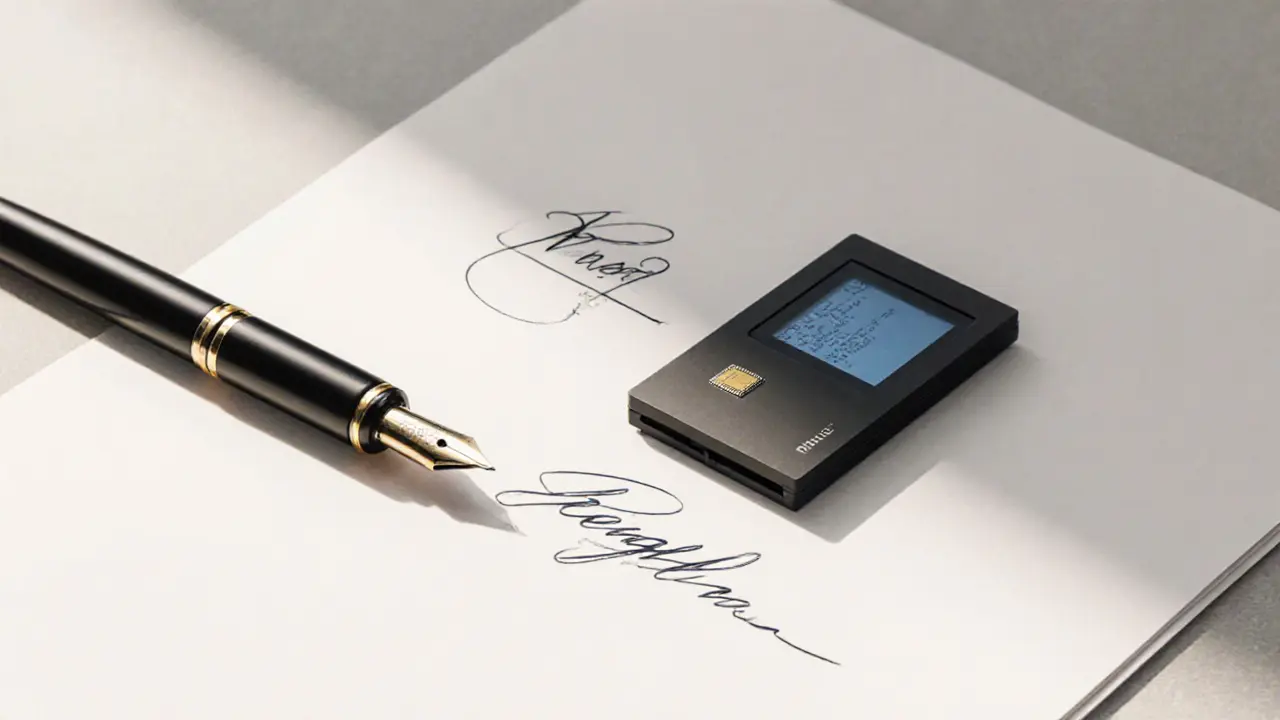Traditional Signatures – What They Are and Why They Matter
When talking about Traditional Signatures, hand‑written marks that verify a person’s agreement or identity on physical documents. Also known as handwritten signatures, they have been the legal backbone of contracts for centuries. Traditional signatures still show up in everything from lease agreements to bank forms, even as the world rushes toward digital alternatives.
Key Comparisons with Modern Counterparts
Enter Digital Signatures, cryptographic proofs that a message or transaction originated from a specific private key. Unlike ink, digital signatures rely on public‑key cryptography, making them instantly verifiable online. This shift lets platforms like blockchain record immutable proof without a pen. A related development is Decentralized Identity (DID), a self‑sovereign framework where users control their own identity data through blockchain‑based identifiers. DID systems replace traditional identity checks, which often depend on paper‑based signatures, with cryptographic attestations that are easier to audit and harder to forge.
Both digital signatures and DIDs hinge on the same underlying tech: a pair of keys that prove ownership without exposing the private key itself. In practice, this means you can sign a contract on your phone, and the blockchain records the proof without ever storing your personal details. The result is a smoother, faster, and more secure signing experience that scales globally—a sharp contrast to the time‑consuming process of mailing signed paper.
Switching gears, the way consensus is reached in distributed systems also mirrors the evolution from traditional to modern. Traditional Consensus, methods like majority voting used in early computer networks and corporate boards rely on every participant trusting a central authority or a simple majority. Byzantine Fault Tolerance (BFT), an algorithmic approach that lets a network reach agreement even if some nodes act maliciously or fail takes this a step further. BFT allows blockchain networks to keep operating securely even when a fraction of validators act against the rules, something traditional consensus can’t guarantee.
These concepts—digital signatures, DIDs, BFT, and traditional consensus—form a web of relationships. Traditional signatures encompass proof of consent; digital signatures require cryptographic keys; DIDs enable decentralized proof of identity; BFT influences how traditional consensus mechanisms evolve to stay secure. Understanding this web helps you see why regulations, airdrops, and tax rules keep mentioning identity verification and transaction authenticity.
That’s why the articles below dig into real‑world topics like India’s crypto tax, Mexico’s FinTech law, and the legal risks of evading sanctions. Each piece shows how the shift from ink to code reshapes compliance, market dynamics, and security. Whether you’re hunting airdrop rewards, navigating tax filings, or evaluating a new DEX, grasping the role of signatures—both traditional and digital—gives you a solid footing. Ready to explore the details? The collection below breaks down the latest on crypto taxes, blockchain standards, exchange reviews, and more, all through the lens of how we prove identity and consent in a digital age.

Digital Signatures vs Traditional Signatures in Crypto: A Practical Comparison
A clear comparison of digital and traditional signatures, covering how they work, security differences, blockchain use cases, and future post‑quantum trends.
